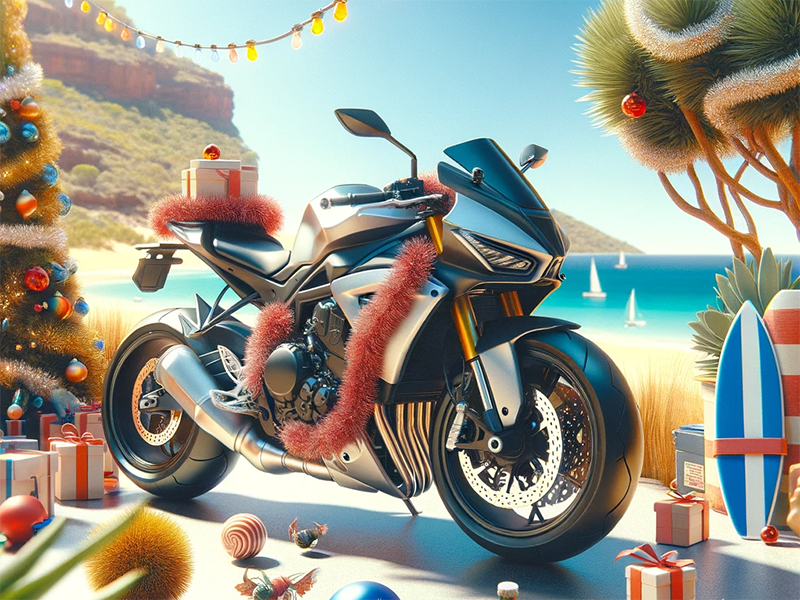For many aspiring motorcyclists in Victoria, the question often arises – “How long can I hold a learner’s permit before acquiring a full Victoria motorbike license?” You’ve landed at the right spot if you’re among those pondering this query. This comprehensive guide dives deep into the duration of learnership, regulatory nuances, and indispensable tips. Whether you’re a beginner with a penchant for the open road or someone seeking a refresher, this guide is tailored for all motorcycle enthusiasts in Victoria, Australia.
Understanding the Learner’s Duration in Victoria
Duration of the VIC Learners Permit
In Victoria, a motorcycle learner’s permit traditionally lasts 15 months. This period isn’t just a waiting game—it’s a pivotal time. The holder must familiarise themselves with their motorcycle, grasp essential road rules, and build confidence. By the end of these 15 months, learners should ideally be adept enough to transition seamlessly into a probationary motorcycle license phase.
Extending the Learner’s Duration
Life is unpredictable; sometimes, 15 months might scratch the surface of one’s learning curve. Perhaps you had limited opportunities to ride or simply need more time to master specific techniques. Whatever the reason, Victoria offers learners avenues to extend their permit duration. However, this step is more complex than marking an X on a calendar. It’s vital to be well-informed about the renewal process, potential costs involved, and any limitations or restrictions that might come into play.
Maximising Your Learning Experience on the Road
Key Considerations for Motorcycle Learners
Embarking on your journey to become a skilled motorcyclist in Victoria is both exhilarating and challenging. Every ride becomes a lesson, every challenge a stepping stone. As you navigate this exciting path, here are some pivotal aspects to consider:
Prominent Identification: Learners are advised to display an identification like the ‘L’ plate visibly across many regions. This isn’t merely a regulatory tick box—it serves a purpose. Other road users can identify your experience level by signifying your learner status. This often fosters an environment of understanding, and in many cases, seasoned riders and drivers might even offer you guidance, advice, or simply the space and patience you need on the road. It’s an unspoken bond of the motorcycling community, nurturing the next generation of riders.
Start Solo: While the allure of group rides or taking a companion along can be tempting, the initial days of learning are best faced solo. Being alone allows you to connect deeply with your machine, understanding its every hum, purr, and roar. You’ll be able to internalise lessons more effectively without external distractions, ensuring that when you eventually join group rides, you’re doing so with a foundation of solid skills and confidence.
Choose Your Riding Times Wisely: Not all hours are equal, especially for new riders. Dusk might paint a romantic hue on the horizon, but it brings challenges for a newbie. Opting for quieter hours reduces the stress of navigating heavy traffic and provides a safer environment to practice. Think of early morning rides with the roads primarily to yourself or late afternoon jaunts when you’re wide awake and the world is bathed in clear daylight. These choices can significantly impact the quality of your learning experience.
Journey to Your Full Motorcycle License in Victoria
For many, obtaining a full motorcycle license isn’t just about riding; it’s about freedom, passion, and a sense of accomplishment. Every individual’s journey will be distinct, but most will traverse a path laden with theoretical and practical lessons. Here’s a more detailed overview of what one can anticipate:
Theoretical Understanding: More than knowing how to throttle is needed; understanding the intricacies of the road is paramount. Delving deep into road rules, studying different terrains, understanding the mechanics behind your bike’s roar, and internalising safety procedures are all part of the learning curve. Most regions, including Victoria, ensure riders are well-prepared by mandating written or computer-based tests. These aren’t mere hurdles but tools designed to arm riders with the knowledge they need for safe and enjoyable rides.
Practical Training: Theory can teach you the ‘what’ and ‘why’, but hands-on training teaches you the ‘how’. While self-learning is a route some choose, the insights, feedback, and techniques shared by seasoned instructors are unparalleled. Such structured lessons can dramatically expedite the learning process. They introduce learners to real-world scenarios, from navigating bustling intersections to understanding how a bike responds in wet conditions, ensuring riders aren’t caught off-guard when on their own.
Skill Assessment: This isn’t just a formality—it’s the culmination of your learning journey. Before granting a full license, authorities want to ensure riders can handle the unpredictability of the road. Whether demonstrating a sharp U-turn, showing control in emergency stops, or handling a sudden obstacle, this assessment is comprehensive and crucial. Think of it not as a test but as a rite of passage, validating that you’re skilled and ready to join the broader community of riders.
Remember, each rider’s journey is unique. It’s crucial to be patient and thorough in each phase to ensure that you get your license and are truly ready for the open road.
Tips for a Fruitful Learnership Period
1. Stay Consistent
Riding a motorcycle is much like any skill – the more you practice, the better you get. Aim for regular stints on the saddle even if your schedule doesn’t allow for daily rides. By maintaining consistency, muscle memory develops, reflexes get sharper, and before you know it, what seemed challenging initially becomes second nature. Plus, frequent rides give you a broad spectrum of experiences, from different traffic situations to varied weather conditions.
2. Enrol in a Training Course
Beyond just the basics, recognised training courses offer a structured pathway, covering both theoretical aspects and practical nuances of riding. They simulate real-world situations, equip you with emergency handling techniques, and expose you to different terrains and conditions. Moreover, learning under the watchful eye of an expert means you get corrective feedback in real-time, which is invaluable in the early stages of your riding journey.
3. Always Ride Safely
A motorcycle is a machine of freedom, but with that freedom comes responsibility. Every time you hit the road, prioritise safety above all else. This means wearing a helmet and protective gear, being vigilant about your surroundings, and understanding that speed might thrill, but control keeps you safe. Treat every ride as an opportunity to ingrain safe habits that will last a lifetime.
4. Seek Feedback
Every rider, no matter how seasoned, was once a beginner. Seek out experienced motorcyclists, ride with them, and ask for feedback. They bring a wealth of experience and can offer insights or identify potential bad habits you might develop unwittingly. Constructive criticism can be an invaluable tool in refining your riding techniques.
In Conclusion
Victoria offers a systematic approach for motorcyclists, ensuring they’re adequately skilled and confident before holding a full bike license. While the leadership phase has its constraints, it’s a crucial period that lays the foundation for a lifetime of safe and enjoyable motorcycling.
Remember, each individual’s journey to becoming a proficient motorcyclist is unique. Some might be ready in a few months, while others might take 15 months. It’s essential to progress at your pace, ensuring you’re well-prepared for the road ahead.
Stay Upright offers expert guidance and comprehensive training for those looking to hone their skills and enhance their confidence on the road. After all, the key to mastering motorcycling is not just about obtaining a Victoria motorbike license but ensuring every ride is safe and enjoyable. Stay informed, stay skilled, and most importantly, Stay Upright.



